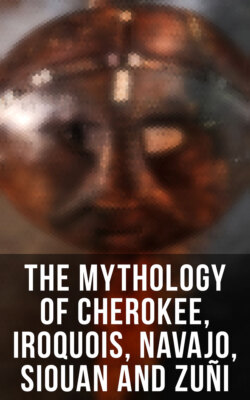Читать книгу The Mythology of Cherokee, Iroquois, Navajo, Siouan and Zuñi - James Mooney - Страница 13
На сайте Литреса книга снята с продажи.
American Man in Glacial Times
ОглавлениеThat this migration occurred before the Glacial period is proved by the circumstance that chipped flints and other implements have been discovered in ice-drift at points in Ohio, Indiana, and Minnesota, to which it is known that the southern margin of the ice-sheet extended. This proves that man was driven southward by the advancing ice, as were several Old World animal species which had migrated to America. However, it is difficult in many cases to accept what may seem to be evidence of the presence of prehistoric man in North America with any degree of confidence, and it will be well to confine ourselves to the most authentic instances. In the loess of the Mississippi at Natchez Dr. Dickson found side by side with the remains of the mylodon and megalonyx human bones blackened by time. But Sir Charles Lyell pointed out that these remains might have been carried by the action of water from the numerous Indian places of burial in the neighbourhood. In New Orleans, while trenches were being dug for gas-pipes, a skeleton was discovered sixteen feet from the surface, the skull of which was embedded beneath a gigantic cypress-tree. But the deposit in which the remains were found was subsequently stated to be of recent origin. A reed mat was discovered at Petit Anse, Louisiana, at a depth of from fifteen to twenty feet, among a deposit of salt near the tusks or bones of an elephant. In the bottom-lands of the Bourbeuse River, in Missouri, Dr. Koch discovered the remains of a mastodon. It had sunk in the mud of the marshes, and, borne down by its own ponderous bulk, had been unable to right itself. Espied by the hunters of that dim era, it had been attacked by them, and the signs of their onset—flint arrow-heads and pieces of rock—were found mingled with its bones. Unable to dispatch it with their comparatively puny weapons, they had built great fires round it, the cinder-heaps of which remain to the height of six feet, and by this means they had presumably succeeded in suffocating it.
In Iowa and Nebraska Dr. Aughey found many evidences of the presence of early man in stone weapons mingled with the bones of the mastodon. In California, Colorado, and Wyoming scores of stone mortars, arrow-heads, and lance-points have been discovered in deposits which show no sign of displacement. Traces of ancient mining operations are also met with in California and the Lake Superior district, the skeletons of the primitive miners being found, stone hammer in hand, beneath the masses of rock which buried them in their fall. As the object of these searchers was evidently metal of some description, it may reasonably be inferred that the remains are of comparatively late date.
